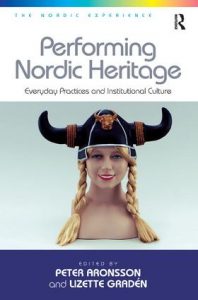Ritið:1/2015
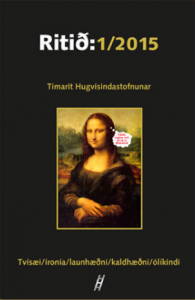 Tvísæi/íronía/launhæðni/ kaldhæðni/ólíkindi
Tvísæi/íronía/launhæðni/ kaldhæðni/ólíkindi
Ritstjórar: Kristinn Schram og Jón Ólafsson
Performing Nordic Heritage
Everyday Practices and Institutional Culture
Edited by Peter Aronsson and Lizette Gradén
© 2013 – Routledge
368 pages
Reviewed by
Iceland and Images of the North
Publication Year: 2011
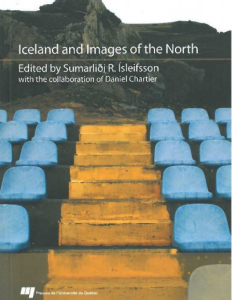 ly changing world, cultural identity and images have emerged as one of the most challenging issues in the social and cultural sciences. These changes provide an occasion for a thorough reexamination of cultural, historical, political, and economic aspects of society. The INOR (Iceland and Images of the North) group is an interdisciplinary group of Icelandic and non-Icelandic scholars whose recent research on contemporary and historical images of Iceland and the North seeks to analyze the forms these images assume, as well as their function and dynamics. The 21 articles in this book allow readers to seize the variety and complexity of the issues related to images of Iceland. See also project website
ly changing world, cultural identity and images have emerged as one of the most challenging issues in the social and cultural sciences. These changes provide an occasion for a thorough reexamination of cultural, historical, political, and economic aspects of society. The INOR (Iceland and Images of the North) group is an interdisciplinary group of Icelandic and non-Icelandic scholars whose recent research on contemporary and historical images of Iceland and the North seeks to analyze the forms these images assume, as well as their function and dynamics. The 21 articles in this book allow readers to seize the variety and complexity of the issues related to images of Iceland. See also project websitePublished by: Presses de l'Université du Québec
Series: Droit au Pôle
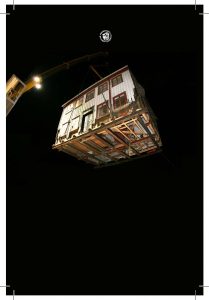  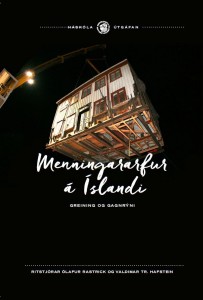 |
Menningararfur á Íslandi: Gagnrýni og greining
Rits EFNISYFIRLIT Gagnrýnin menningararfsfræði Rannsóknarsvið í mótun
Ólafur Rastrick og Valdimar Tr. Hafstein
Menning í öðru veldi Skipan menningararfsins
Valdimar Tr. Hafstein
Þjóðnýting menningararfsins Norræn miðaldamenning ogsköpun nútímaþjóðernis
Guðmundur Hálfdanarson
Breytileg merking menningararfs Skautbúningurinn, konurnar, landið og þjóðin
Karl Aspelund
Í húð og hár Arfurinn, kvenleikinn og ögun líkamans
Ólafur Rastrick
„Þetta er fyrir tvöhundruð árum!“ Um sviðsetningu menningararfs
Bryndís Björgvinsdóttir
Menningararfur á skiltum Gömlum söguskilningi hafnað og lifir þó
Helgi Þorláksson
Moldargreni og menningararfur Útrýming og arfleifð íslenska bæjarins
Sigurjón Baldur Hafsteinssonog Marta Guðrún Jóhannesdóttir
Óræður arfur Þjóð- og kyngervi dullendunnar í norðri
Katla Kjartansdóttir og Kristinn Schram
Róbótar og gamalt skyr Framleiðsla á menningararfi og staðbundnum mat
Jón Þór Pétursson
Þjóðardýrlingur heldur til Rómar Hagnýting Guðríðar Þorbjarnardóttur 1980–2011
Sigríður Helga Þorsteinsdóttir
Menningararfur í ólgusjó Norsku teinæringarnir Örn og Hrafn
Áki Guðni Karlsson
Athafnahyggja og menningararfur
Tinna Grétarsdóttir
|
Perceptions and Strategies of Arcticness in Sub-Arctic Europe
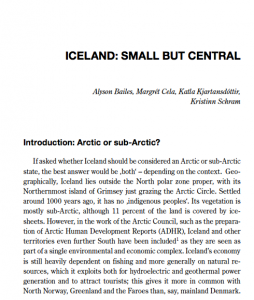 Edited Andris Sprūds and Toms Rostoks
Edited Andris Sprūds and Toms Rostoks
Latvian Institute of International Affairs, 2014. Supported by the Konrad Adenauer Stiftung
Landscape Research. Vol. 40:1 (2015)
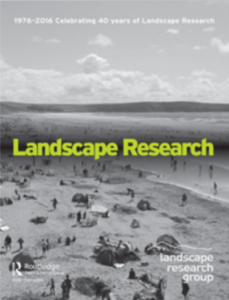 „Speeding Towards the Future through the Past: Landscape, Movement and National Identity.“ Landscape Research. Vol. 40:1 (2015). Taylor and Francis. Arnar Árnason, Tinna Grétarsdóttir, Sigurjón Baldur Hafsteinsson, Katla Kjartansdóttir og Kristinn Schram
„Speeding Towards the Future through the Past: Landscape, Movement and National Identity.“ Landscape Research. Vol. 40:1 (2015). Taylor and Francis. Arnar Árnason, Tinna Grétarsdóttir, Sigurjón Baldur Hafsteinsson, Katla Kjartansdóttir og Kristinn Schram

